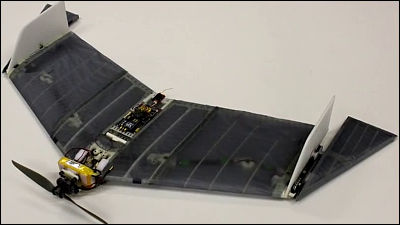A parachute inspired by Japanese paper cutting could help with logistics and space exploration by allowing a straight drop to a target.
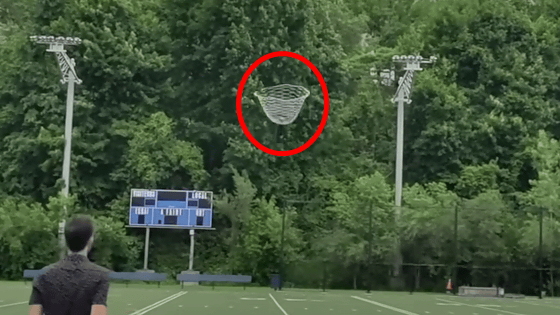
A research team from the Department of Mechanical Engineering at the Montreal Polytechnique University has presented a new parachute concept inspired by the traditional Japanese art of paper cutting. The unique feature of this parachute is that it can descend straight toward its target during free fall, suggesting its potential for a wide range of applications, from humanitarian aid missions that deliver food, water, and medicine to space exploration.
Kirigami-inspired parachutes with programmable reconfiguration | Nature
A parachute from Polytechnique Montréal lands in 'Nature' | Carrefour de l'actualité
https://www.polymtl.ca/carrefour-actualite/en/news/parachute-polytechnique-montreal-lands-nature
Kirigami-inspired parachute falls on target – Physics World
https://physicsworld.com/a/kirigami-inspired-parachute-falls-on-target/
At 1 minute 38 seconds in the video below, you can see the drone lifting and dropping the parachute.
This parachute is full of holes and that's a good thing - YouTube
The drone lifted the parachute.
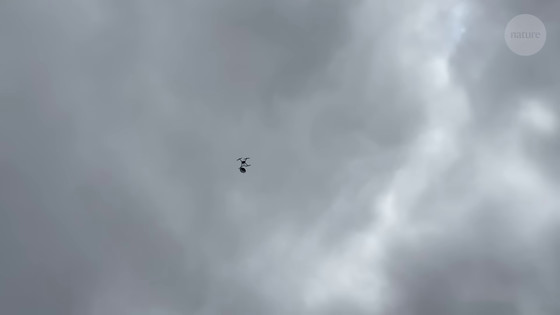
When it was dropped, the weight attached to the center drooped down.
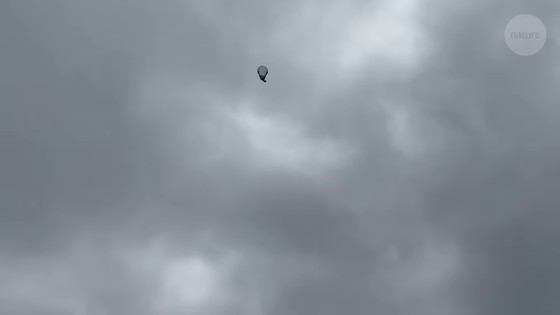
The parachute fell straight down in front of the camera.
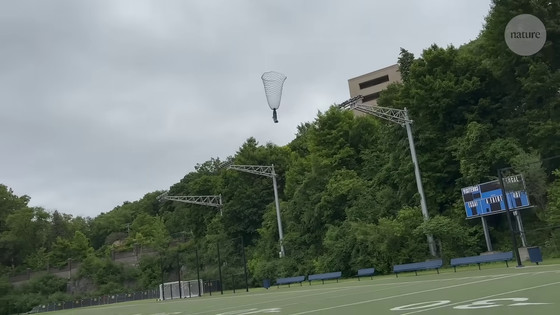
I landed on the ground.
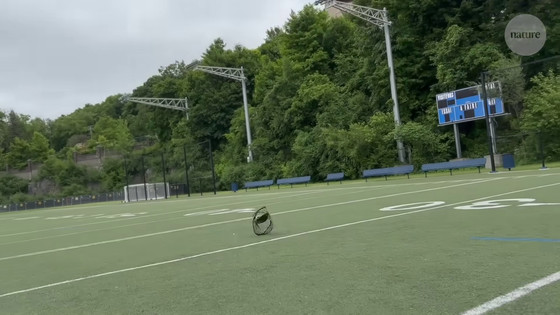
A typical parachute expands and traps air inside, generating drag and slowing the descent speed. The amount of drag varies depending on the shape and composition of the parachute, as well as the surrounding air currents. If excessive drag is generated, vortices form above the parachute, making the descent path unpredictable.
Professor Frédéric Gosselin was at a conference in the United States when he saw a researcher demonstrate how a plastic sheet cut in a specific 'kirigami' pattern could be deformed. He realized that cutting the sheet in this kind of pattern could create new mechanical properties. He discussed this with his collaborator, Professor Sophie Lamannarivo of École Polytechnique , and wondered if cutting the sheet in this pattern could function as a parachute, but they didn't delve too deeply into the idea.
Later, David Melanson, an expert on folding structures inspired by paper cutting, was invited to the Montreal Polytechnic University to study the idea again. Master's student Danick Lamoureux pursued patterns that increased air resistance, eventually succeeding in creating a parachute that stabilized immediately upon falling.
One of the features of the parachute that Professor Gosselin and his colleagues discovered is that there is no special folding method for the 'correct opening.' Also, the trajectory during free fall is different from that of conventional parachutes; when dropped from above a target, it lands almost straight down. Furthermore, because the materials and equipment are all readily available, it can be made at low cost.
This new parachute is thought to be useful for dropping supplies for humanitarian aid. As mentioned above, dropping supplies with a conventional parachute has the drawback of making it difficult to predict the trajectory of the drop. In some cases, cargo is dropped without a parachute, with the assumption that some parts will break to absorb the impact. 'This paper-cutting-inspired parachute could prove to be the best solution for this use case,' says Melanson.
While the parachute could potentially be used for remote delivery or space probes, the team first plans to explore new properties. 'By changing the cutting pattern, we can make the parachute rotate and descend, or glide sideways before falling,' Melanson said.
Related Posts:

